On this page
Passenger PigeonThis page lists books about the Passenger Pigeon. The books are listed in order of publication date with the most recent at the top.
Pigeons
For books about pigeons and doves see;
Pigeons
Extinct Birds
For books about extinct birds in general, with links to pages about other extinct species, see;
Extinct Birds
|
|
|
|
The Passenger PigeonErrol Fuller
Princeton University Press
2014
"This stunningly illustrated book tells the astonishing story of North America's Passenger Pigeon, a bird species that--like the Tyrannosaur, the Mammoth, and the Dodo--has become one of the great icons of extinction. Errol Fuller describes how these fast, agile, and handsomely plumaged birds were immortalized by the ornithologist and painter John James Audubon, and captured the imagination of writers such as James Fenimore Cooper, Henry David Thoreau, and Mark Twain. He shows how widespread deforestation, the demand for cheap and plentiful pigeon meat, and the indiscriminate killing of Passenger Pigeons for sport led to their catastrophic decline. Fuller provides an evocative memorial to a bird species that was once so important to the ecology of North America, and reminds us of just how fragile the natural world can be. Published in the centennial year of Martha's death, The Passenger Pigeon features rare archival images as well as haunting photos of live birds."
|
Buy from amazon.co.uk 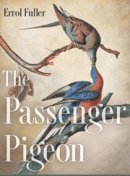
|
|
Pilgrims of the Air: The Passing Of The Passenger PigeonJohn Wilson Foster
Notting Hill Editions
2014
"This is a story of a scarcely credible abundance, of flocks of birds so vast they made the sky invisible. It is also a story, almost as difficult to credit, of a collapse into extinction so startling to the inhabitants of the New World as to provoke a mystery. In the fate of the North American passenger pigeon we can read much of the story of wild America - the astonishment that accompanied its discovery, the allure of its natural 'productions', the ruthless exploitation of its 'commodities' and the ultimate betrayal of its peculiar genius. And in the bird's fate can be read, too, the essential vulnerability of species, the unpredictable passage of life itself."
|
Buy from amazon.co.uk 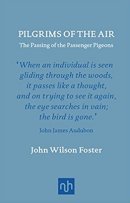
|
|
A Message from Martha: The Extinction of the Passenger Pigeon and Why it Still MattersMark Avery
Bloomsbury
2014
"September 1st, 2014 marked the centenary of one of the best-documented extinctions in history - the demise of the Passenger Pigeon. From being the commonest bird on the planet 50 years earlier, the species became extinct on that fateful day, with the death in Cincinnati Zoo of Martha - the last of her kind. This book tells the tale of the Passenger Pigeon, and of Martha, and of author Mark Avery's journey in search of them. It looks at how the species was a cornerstone of the now much-diminished ecology of the eastern United States, and how the species went from a population that numbered in the billions to nil in a terrifyingly brief period of time. It also explores the largely untold story of the ecological annihilation of this part of America in the latter half of the 19th century, a time that saw an unprecedented loss of natural beauty and richness as forests were felled and the prairies were ploughed, with wildlife slaughtered more or less indiscriminately. Despite the underlying theme of loss, this book is more than another depressing tale of human greed and ecological stupidity. It contains an underlying message - that we need to re-forge our relationship with the natural world on which we depend, and plan a more sustainable future. Otherwise more species will go the way of the Passenger Pigeon. We should listen to the message from Martha."
|
Buy from amazon.co.uk 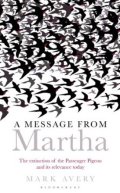
|
|
A Feathered River Across the Sky: The Passenger Pigeon's Flight to ExtinctionJoel Greenberg
Bloomsbury
2014
"In the early nineteenth century 25 to 40 percent of North America's birds were passenger pigeons, traveling in flocks so massive as to block out the sun for hours or even days. The down beats of their wings would chill the air beneath and create a thundering roar that would drown out all other sound. Feeding flocks would appear as 'a blue wave four or five feet high rolling toward you.' As naturalist Joel Greenberg relates in gripping detail, the pigeons' propensity to nest, roost, and fly together in vast numbers made them vulnerable to unremitting market and recreational hunting. The spread of railroads and telegraph lines created national markets that allowed the birds to be pursued relentlessly. Passenger pigeons inspired awe in the likes of Audubon, Henry David Thoreau, James Fenimore Cooper, and others, but no serious effort was made to protect the species until it was way too late. Greenberg's beautifully written story of the passenger pigeon provides a cautionary tale of what happens when species and natural resources are not harvested sustainably."
|
Buy from amazon.co.uk 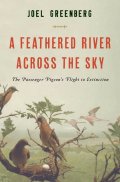
|
|
The Silent Sky: The Incredible Extinction of the Passenger PigeonAllan W. Eckert
iUniverse.com
2000
"This nature novel, by following the hatching and lifetime experiences of the last know wild passenger pigeon, chronicles the life, natural history, and ultimate extinction of this species which was once the most abundant bird species in North America."
|
Buy from amazon.co.uk 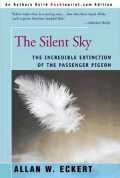
|
|
The Passenger Pigeon: Its Natural History and ExtinctionA.W. Schorgen
University of Oklahoma Press
1955
A study of the Passenger Pigeon based on detailed research. Includes information on behavioral characteristics, feeding methods, traveling and roosting habits, and nesting. Describes the relationship between the bird and man from its use by Native Americans to its destruction by white settlers.
|
Buy from amazon.co.uk 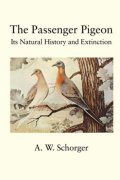
|
|
The Passenger Pigeon In OntarioMargaret H. Mitchell
Published Under The Reuben Wells Leonard Bequest
Contributions Of The Royal Ontario Museum Of Zoology
University of Toronto Press
1935
From the introduction: "One of the most fascinating chapters in the annals of North American wild life is filled by the history of the passenger pigeon. Occurring in numbers that seem to have exceeded those of any other bird of which we have record, the species would command the attention for that reason alone, even without the additional fascination of being now extinct. We have today this history complete, and it is possible to trace it from misty beginnings in the Pleistocene to the death of the last survivor, Martha, who died at the age of about twenty-five in the Cincinnati Zoological Garden in 1914. Much has already been written of these birds, beginning with accounts from early travellers and pioneers and ending with the more scientific records of such men as Forbush and Barrows. However, nothing as exhaustive as this monograph has ever been attempted. W. B. Mershon and J. C. French made valuable collections of information for their respective States of Michigan and Pennsylvania, but as they themselves assert they were both simply interested and enthusiastic laymen. It is felt, therefore that the present work has a definite contribution to make to the knowledge of an extinct species. It not only preserves such information as we have concerning passenger pigeons in the province of Ontario, but it also covers rather fully several aspects of the birds' life-history which have before been only touched upon. Enumerating the most important, they are: food; northern limits of occurrence and nesting; variation in numbers; fixed migration routes, and finally, a new theory of extermination which divests former theories of much of their uncertainty and mystery."
|

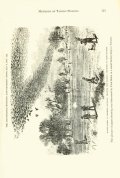
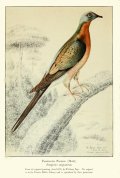
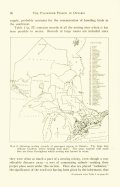 |
|
The Passenger PigeonW.W. Thompson
1922
Opening lines: "The earliest mention of Passenger Pigeons, once so plentiful, now extinct, appeared in a report of two voyages to New England made during 1638 and 1663, by Joseph Josselyn, published in 1674. 'The Pidgeons, of which there are millions of millions, I have seen a flight of Pidgeons in the Spring and at Michaelmas, when they returned back to the Southland for four or five miles, that to my thinking had neither beginning or ending, length or breadth, so thick I could see no Sun. They join nest to nest and tree to tree by their nests, miles together, in Pine trees. I have bought in Boston a dozen pidgeons already pulled and garbidged for three pence. But of late they are much diminished, the English taking them with nets.' It took more than two hundred years 'diminishing' to reach the vanishing point."
|
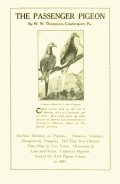
 |
|
The Passenger Pigeon In PennsylvaniaIts Remarkable History, Habits And Extinction, With Interesting Side Lights On The Folk And Forest Lore Of The Alleghenian Region Of The Old Keystone StateJohn C. French
Altona Tribune Company
1919
Opening lines: "Among native birds of North America the Passenger Pigeon was, in several characteristics, most wonderful, the living, pulsing, throbbing and picturesque illustration of the abundance of food, prepared by bountiful Nature, in all her supreme ecstasy of redundant production of life and energy, that the native tribes and our early pioneers ever knew, or imagined as essential to their Happy Hunting Grounds and other blest abodes beyond the veil of physical environment, where the longings of baffled minds should vanquish the fears of sinister evils and realize harmony in the triumphant existence, and the rapture of attaining the ideals of unalloyed peace. The Passenger Pigeon (Ectopistes migratorius) was known, east of the Rocky mountains from the Gulf of Mexico to Hudson Bay, wherever food was abundant, and not covered by snow; for pigeons could not endure snow, although the cold affected them little when the air was dry. They have been reported around the shores of Hudson Bay in November, and in southern Pennsylvania, as late as the first of February, when the ground was bare and food was plentiful. Migrators seem to have been in quest of more inviting feeding grounds where food for the young could be obtained, from the forests around a nesting city, within a radius of about fifty miles."
|
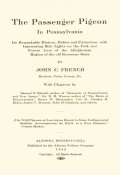

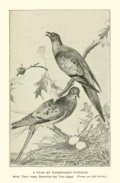 |
|
The Passenger PigeonW.B. Mershon
Colour frontispiece: Louis Agassiz Fuertes
The Outing Publishing Company
1907
From the introduction: "It is hard for us of an older generation to realize that as recently as 1880 the Passenger Pigeon was thronging in countless millions through large areas of the Middle West, and that in our boyhood we could find no exaggeratlon in the records of such earlier observers as Alexander Wilson, the ornithologist, who said that these birds associated in such prodigious numbers as almost to surpass belief, and that their numbers had no parallel among any other feathered tribes on the face of the earth; or that one of their 'roosts' would kill the trees over thousands of acres as completely as if the whole forest had been girdled with an ax. ...
.... Many theories have been advanced to account for the disappearance of the wild pigeons, among them that their migration may have been overwhelmed by some cyclonic disturbance of the atmosphere which destroyed their myriads at one blow. The big 'nesting' of 1878 in Michigan was undoubtedly the last large migration, but the pigeons continued to nest infrequently in Michigan and the North for several years after that, and until as late as 1886 they were trapped for market or for trap-shooting. Therefore the pigeons did not become extinct in a day; nor did one tremendous catastrophe wipe them from the face of the earth. They gradually became fewer and existed for twenty years or more after the date set as that of the final extermination."
|

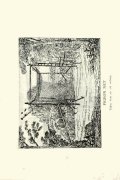
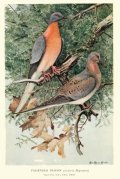 |
|